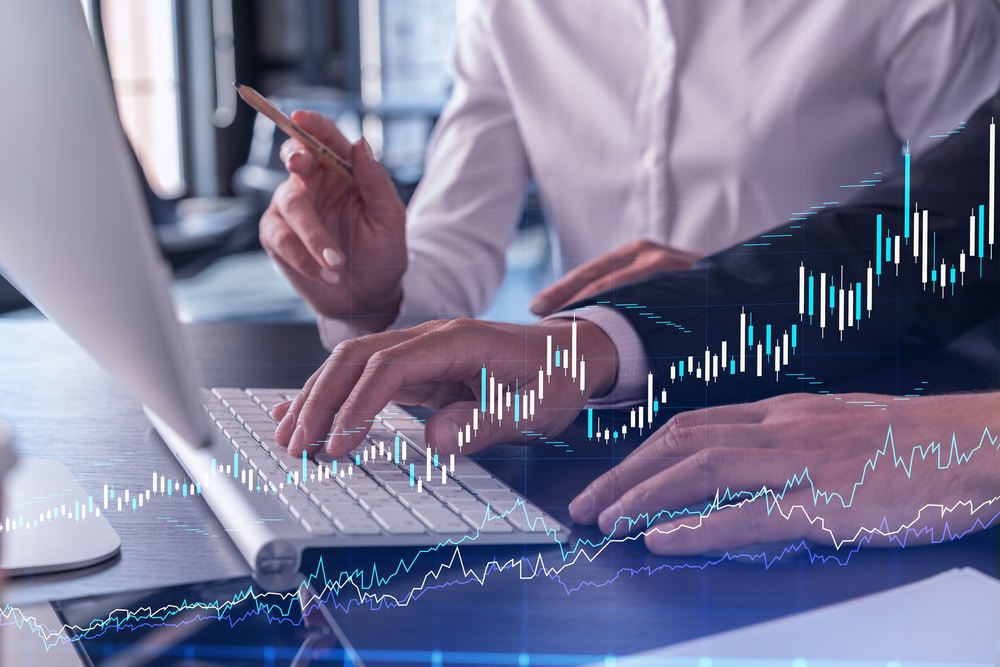Everyone knows about the gigantic size of the forex markets; it contains a myriad of ordinary folk trading in their bedrooms, multinational conglomerates involved in heavy import-export, all the way to banks facilitating millions worth of foreign exchange transactions for their clients.
When we observe the actual participants involved in forex, we see an interesting distinction. We typically classify traders in the markets as either retail or institutional.
While the number of retail speculators far outweighs their counterparts (well over 90%), it is the position size transacted by the latter that tremendously dwarfs the former; institutional parties account for at least 90% when it comes to volume.
For the ordinary trader, it is beneficial to know the main participants involved in the markets. Knowing this information, while it is difficult to obtain, can help us in our technical and fundamental analysis.
Ultimately, it’s about knowing what the ‘big players’ are doing that translates into the price movements we witness.
The significance of knowing the ‘big players’
The first statement to make here is not all forex participants trade for speculative profit purposes but rather use foreign exchange for different purposes. It’s common knowledge retail traders only trade to make money, but what do the other contributors do, and why is it significant?
For example, a commonly-used indicator for sentiment, the Commitment of Traders (COT) Report, looks at all the long and short positions made by essentially massive institutional traders (or commercial traders) in the forex futures markets.
Observing these findings is one way of knowing what the ‘big players’ are thinking in advance because it is only their volume that can move the markets. Analyzing this report is one of the skillful methods to note changes in their positions that will affect the spot forex markets.
These institutional traders partake in this instrument for hedging against currency risk rather than for profit. Another instance of why knowing the ‘big players’ is essential is a trading style attempting to look at the order flow. Although getting accurate order flow in forex is virtually impossible, there are legions of trading communities who’ve dedicated their career to learning this approach.
They believe it to be a concept that commercial banks and other institutional guys heavily utilize. As in the previous example, they carry the ‘weight’ that significantly influences price movements.
So, who are the people that trade forex?
As already established, we can distinguish traders as retail or institutional. Retail refers to the average person trading for their own personal accounts.
Institutional is more professional and corporate, involving different institutions, trading primarily for others (commercial and central banks, corporations), engaged in large foreign importing and exporting (corporations), etc.
The main motivation for retail traders is pure profit, while for institutional, this is more of a secondary result than a primary one. Let’s explore both camps in greater detail.
Retail traders
Retail speculators are the average, profit-driven traders who trade their own accounts and have no responsibility to others. Various data suggests this section of forex is around 5%, which is a minuscule amount.
Institutional traders
While the list below is not inexhaustive, it does cover a vast majority of the institutional guys in forex. Although there is no data accurately telling us who contributes the largest volume, the commonly-held perception is commercial banks do as they are essentially the providers of forex.
Commercial banks
This group of traders is sometimes referred to as the interbank market. Put simply, they are the forex market and include the likes of Goldman Sachs, Bank of America, HSBC, UBS, Citigroup, Barclays, and JPMorgan.
Their responsibilities are three-fold. Firstly, and probably the primary, providing the liquidity for everyone else to trade forex through online brokers and other forex dealers.
They perform this activity through a multitude of decentralized ECNs (electronic communication networks). Secondly, these banks provide foreign exchange services for their client, also known as ‘clearing the flow.’
Most of their trades are for this purpose, with a few being for their proprietary gain. Lastly, to link from the last point, these banks also take speculative positions like retail traders for themselves.
Central banks
Central banks are an integral part of any country’s economy because they are the regulators of monetary policies, most notably setting the interest rate. So, any positions they take are for such purposes.
For instance, they may buy large amounts of foreign currency to increase exports in their domestic markets. Or they could invest in other countries with better interest rates than their own to offset the difference.
International corporations
These brands mostly deal with forex for import and export purposes since they provide goods and services to countless countries.
For example, an American car manufacturer importing parts from Japan and selling their vehicles to the United Kingdom will need to convert the British pounds they receive from the UK back to US dollars and then convert those to Japanese yen for purchasing more (parts.
Such corporations are known for their participation in the forex futures market, where they will deal with receiving payments in advance from different nations. They use futures to hedge against currency risk in the meanwhile by ‘locking’ in set prices.
Investment managers and hedge funds
This group of investors comprises hedge funds and other pool-funded schemes such as foundations, endowments, pension funds, and so on.
We can refer to these parties as their clients. Like commercial banks, they participate in buying and selling foreign securities for them and executing trades for their monetary gain.
Final word
This article hopefully serves as a guide in understanding how diverse the participants of forex are and how their actions can affect the traded currencies.
The point is that if we know that, as an example, central bank X has decreased their country’s interest rate, we should expect some reaction we can mirror on our charts in anticipation.
Therefore, knowing all the different players is one aspect of conducting solid technical and fundamental analysis to make the best trading decisions.
